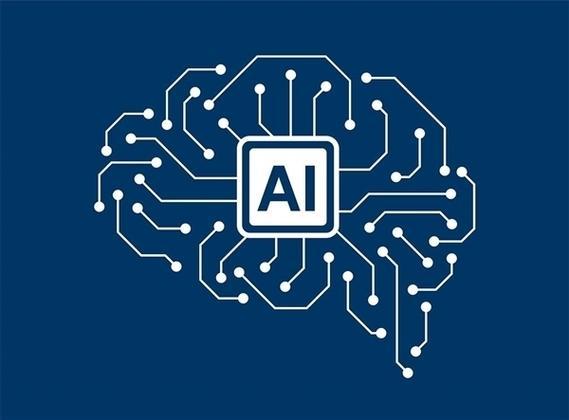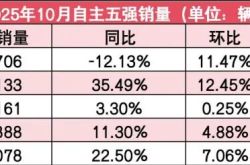AI's Next Frontier: Self-Sufficiency, Ecosystem Synergy, and Infrastructure Integration
![]() 09/05 2025
09/05 2025
![]() 376
376

The advent of Deepseek represents a pivotal moment. It signals that AI development has transitioned from a mere "conceptual clash" among players to a full-fledged "application war." At this juncture, any player aspiring to make a mark in the AI landscape must recognize that relying solely on conceptual breakthroughs and capital injections is unsustainable. Instead, it is through the practical application and implementation of AI that new development models tailored to this new era can be discovered, propelling AI development to unprecedented heights and securing victory in this new cycle.
By observing AI's integration and application across diverse fields and scenarios, such as e-commerce, manufacturing, and education, and witnessing its immense potential, this point becomes abundantly clear. Unsurprisingly, in the coming era, only those players who can master the correct methods and approaches for AI implementation and application, forge a brand-new AI ecosystem, and innovate entirely new business models leveraging AI, will be able to sustain their presence in this new cycle.
As AI begins to unveil more of its developmental potential and embarks on a novel trajectory, how should we respond to achieve resonance with AI? How can we adapt to continue achieving mutually beneficial outcomes with AI? By scrutinizing the profound transformations currently underway in AI, particularly the new performances of leading AI players, we can discern that AI is now exhibiting fresh signs and forging new trends.
AI's Driving Force Shifts from 'External Support' to 'Self-Sufficiency'
In an era where AI elements permeate every aspect of our lives, viewing AI merely as a concept or a gimmick to attract capital and support for development is a recipe for failure. One of the primary reasons for this predicament is that the AI industry has already shifted from relying on "external support" to achieving "self-sufficiency." In essence, this stage is not about testing players' ability to innovate concepts and gimmicks but rather their capacity to implement and apply AI to drive new development.
Observing the current trajectory of AI, we find that nearly all players who have achieved favorable development and undergone self-iteration and upgrading have discovered ways to attain self-sufficiency. By witnessing AI's integration and application across various scenarios and industries, as well as the new driving forces it generates, this point becomes intuitively apparent. At this stage, only by finding ways to achieve "self-sufficiency" through AI and leveraging it to drive self-development can one truly elevate their development to a new level.
This is the path to sustainable AI development. Ultimately, AI's "self-sufficiency" hinges on players' ability to implement AI in specific businesses, achieving new profit generation and industry transformation through the seamless integration of AI and business, thereby realizing industrial upgrading. This is the true path to AI development. For any AI player, only by genuinely finding ways to integrate with industries and scenarios and prioritizing implementation and application as the key to AI can they truly elevate their development to a new cycle.
Therefore, the crux of current development lies in utilizing AI means to achieve "self-sufficiency" rather than relying on "external support" for AI. For any player aspiring to make a difference at this stage, finding a business model tailored to AI, rather than merely focusing on the concept itself, is the key to truly propelling AI development to a new stage.
AI's Scale Expands from 'Individual Points' to an 'Ecosystem'
Reflecting on AI's past development, a clear trend emerges: AI development has primarily been confined to individual product and service models, exemplified by ChatGPT. Although some players have expanded AI applications beyond human-machine dialogue scenarios, their true focus remains on a singular logic and scale. If we were to summarize and define AI's development at this stage, individual breakthroughs still constitute the underlying logic.
It must be acknowledged that an individual breakthrough-oriented development model can indeed enable many AI players to reach new heights and seize new development opportunities. However, as AI development transitions from concept-driven to application-driven stages, relentlessly pursuing individual breakthroughs and focusing solely on a limited number of scenarios and industries will not only fail to maximize AI's effectiveness but may even lead AI development down a dead end.
Just as investment advisors caution against putting all eggs in one basket, AI's development should not be confined to just a few scenarios and industries. Only by continuously expanding the scope of AI implementation and application and by constructing an AI ecosystem can we truly elevate AI development to a stage of ecological co-prosperity.
By observing the implementation and practices of leading players, we find that AI has already transcended being confined to a single scenario and industry. Instead, it has evolved into a stage where it can operate across different industries and scenarios, truly connecting them into a network and fostering an ecosystem. Recognizing this new direction in AI development, only by continuously building an AI ecological network and enriching the scenarios for AI implementation and application can we truly elevate AI development to a stage of ecological co-prosperity.
At this point, AI can dismantle the previously constructed barriers and achieve a more diverse and sustainable new development stage by continuously implementing itself in various industries and scenarios. For any player aspiring to make a difference at this stage, only by continuously nourishing AI development with an ecosystem can they truly elevate AI development to a new cycle.
AI's Role Evolves from a 'Vanguard Position' to 'Fundamental Infrastructure'
In the past, mentioning AI often evoked the image of a "vanguard position" for players to showcase their leading edge. In many cases, only forward-looking players would deploy AI to solve real-world problems they faced. This role of AI ultimately resulted in only leading players being able to participate, and only players with certain capabilities being able to engage in AI business.
If AI remains the exclusive domain of a few players and fails to truly implement itself in as many industries and scenarios as possible, its functions and effectiveness will inevitably be unable to reach their maximum potential. One of the key reasons why AI did not achieve the same consensus and far-reaching impact in the past as it does now lies here. To maximize AI's functions and effects, it is necessary to change the current situation where AI is the exclusive domain of a few players and their practice of building high walls around themselves. Instead, by continuously expanding the implementation and application of AI, we can truly make AI a new form of "fundamental infrastructure."
In fact, the essence of AI is a new form of "fundamental infrastructure." Its role is akin to that of past internet technologies. If we consider internet technology as the "fundamental infrastructure" of the internet era, then AI technology is the "fundamental infrastructure" of the AI era. Similarly, reviewing the development of the internet era, we can clearly see that one of the key reasons why internet technology had such a profound impact on people's production and life is that it transformed from being the exclusive domain of a few into something that could be implemented in countless industries and bring about changes in various scenarios. At this point, internet technology has effectively become "fundamental infrastructure."
The same applies to AI. In the coming era, for AI to develop and truly create a new era, it must transform from being the "vanguard position" of a few players to becoming new "fundamental infrastructure." When AI elements are present in various industries and scenarios, and when AI becomes the "water, electricity, and coal" of the digital and intelligent era, it can truly replace the internet and become a new existence that brings profound changes to people's production and life.
Conclusion
The current development of AI is vastly different from the past. If we consider the past development of AI as a budding state, then the current development of AI is a stage of widespread implementation and maturation. At this stage, what truly tests players is no longer the elements we used to believe in but rather new elements that test players in more nuanced ways. For any player aspiring to make a difference at this stage, finding a truly suitable new development model for the present and a new development paradigm that resonates with the current development of the AI industry is the key to continuing to stay in the AI game. The new era of AI has arrived, and only by continuously grasping the new logic of development at this stage and finding truly suitable new paths for current development can one truly elevate their development to a new cycle.





